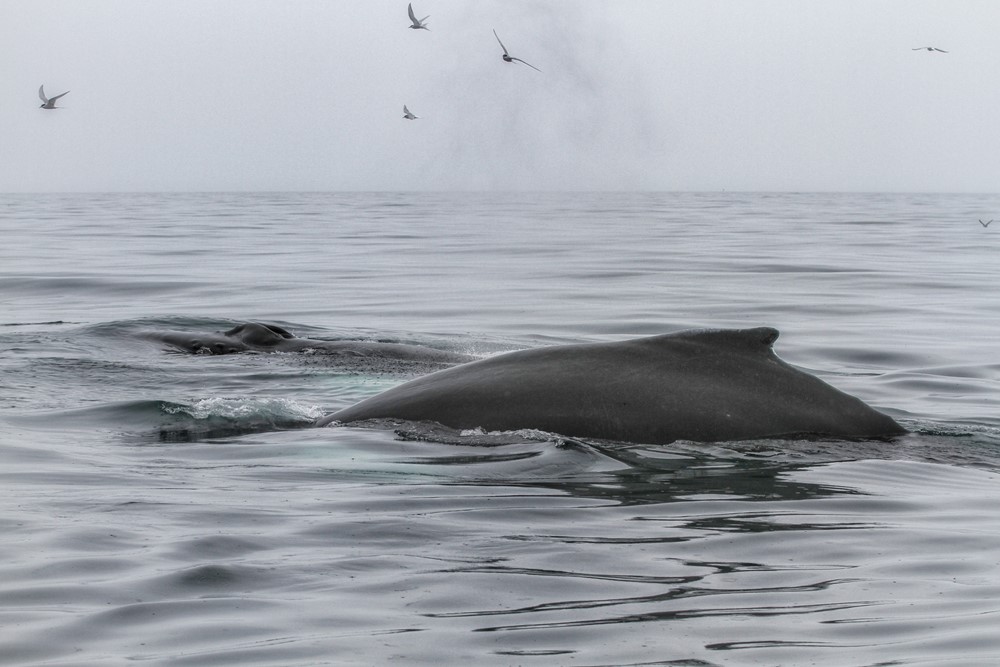AN ORCHESTRA OF NOISE - SEEING WITH YOUR EARS

The ocean is not only the largest habitat on earth, but it is also the darkest. Beneath the waves, light vanishes and the deeper you look, the darker it is. Eventually, at a depth of about a 1000m, all sunlight disappears. In such a dark world, eyes become increasingly irrelevant whilst ears are your key to survival.
Therefore, it's not so surprising though astonishing, that cetaceans such as whales and dolphins rely on and use their ears to navigate, understand and survive the world they live in.
Sound and a good hearing are therefore crucial below the surface and whilst our own hearing might be very limited to just a small range of all the noise underwater, there is a constant orchestra from the lowest to highest frequencies.
Given the fact that cetaceans can so well rely on sound in order to survive, communicate and conduct massive migrations like for example our beloved humpback whales, learning that sound travels way faster and further underwater than it does above the surface doesn't really come as a surprise neither. In fact, it can travel about 1500m per second through water, but only about 340m per second through air.
Especially low frequencies travel far, even further if the whale dives to the depth. In fact, whilst near the surface, sound will rather quickly fade away as it bounces off the surface of the sea or the ocean shelf. But once far enough down, in a certain water layer called the SOFAR or deep sound channel, sound waves gets trapped and might travel at an even faster speed as far as from one side of the Atlantic to the other with just little transmission loss along the way.
- Sarah

